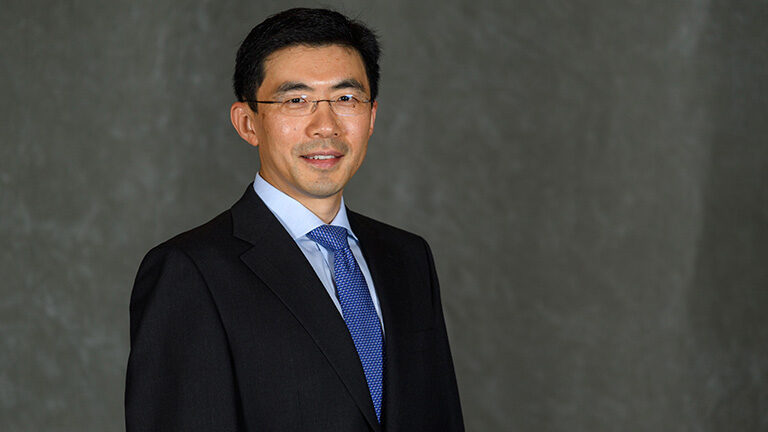Liu to Lead Team in Nanoelectronics Research Center
December 7, 2018 — Professor Kai Liu of the Georgetown College Department of Physics is a theme leader in a major research center on nanoelectronic computing research led by the University of Minnesota.
The Center for Spintronic Materials in Advanced Information Technologies (SMART) will focus on fundamental research on novel materials and devices with the potential to significantly advance the field of nanoelectronic computing. Total funding for the SMART center is $10.3 million over 4 years, including a $7.5 million grant from the U.S. Department of Commerce’s National Institute of Standards and Technology (NIST) and the Semiconductor Research Corporation (SRC), and $2.8 million from SMART partners.
Liu, an incoming McDevitt Chair in the Department of Physics, will work alongside colleagues from the University of Minnesota, the Massachusetts Institute of Technology, Pennsylvania State University and the University of Maryland.
A NEW PARADIGM
SMART will conduct research on spintronics, a field of physics that focuses on the “spin” of electrons that leads to magnetism. This is a different property than the charge of electrons, the subject of traditional electronics.
Spintronics hold the potential for new technology and computational systems that are faster, more reliable, and use less energy than traditional electronics.
“The energy consumption in today’s electronics has become a critical challenge, leading to the coming end of Moore’s law that has been the icon of the high-tech industry over the past 5 decades,” Liu said. “Spintronics offers an exciting new paradigm for future nanoelectronics using electron spin as the information carrier, with vast potentials to fundamentally transform its energy landscape.”
According to the SMART team proposal, the center will be “driven by the need for innovative memory and processing architectures that promise to significantly improve the energy efficiency, throughput, and overall functionality of tomorrow’s computing paradigms; in particular, neuromorphic computing, probabilistic computing, in-memory computing, and wave-based information processing.”
Liu will lead a team on magneto-ionic materials, one of three themes in the SMART Center’s research portfolio. He will examine how properties of materials may be manipulated by the application of an electric field through controlled motion of ions.
“This is an exciting approach that could be a potential ‘game-changer,’” Liu said. “The all-important interfaces in these materials — and, consequently, their material properties — may be drastically changed with a voltage bias, without the flow of relatively inefficient, conventional electric current.”
The SMART center will also offer excellent opportunities for the training of graduate students, undergraduate students, and postdoctoral researchers.
ON-CAMPUS TECHNOLOGY
Though Minnesota will be home to the SMART Center’s headquarters, Georgetown has been preparing to conduct cutting-edge spintronics and nanomagnetics research as well.
The NSF has recently awarded Georgetown a Major Research Instrumentation grant for a state-of-the-art magnetic characterization instrument known as the Magnetic Property Measurement System (MPMS3).
An interdisciplinary team of faculty — including physics professors Kai Liu, Paola Barbara and Edward Van Keuren and chemistry professors Sarah Stoll, Karah Knope, and Timothy Warren — will use MPMS3, which is scheduled to be installed and commissioned in Liu’s lab in early 2019. MPMS3 enables a broad range of ground-breaking research projects. It will also be a timely addition to conduct SMART research.
This shared facility will also help to broaden participation of underrepresented groups in STEM fields and provide research experience for undergraduate students through several partner REU programs.
“In addition to the fantastic opportunities created for our students, Prof. Liu’s program benefits all of the materials research on campus, both by contributing to our shared resources and by raising our profile in the scientific community,” Physics Department Chair Jeffrey Urbach said.
Liu also organized an on-campus workshop last month for NSF’s Division of Materials Research. The workshop focused on challenges and opportunities in the post-Moore’s Law era.
“This workshop brought together leading experts in the field to highlight scientific opportunities that may address the energy challenges in nanoelectronics in general, as symbolized by the coming end of Moore’s law,” Liu said. “We are very pleased to be able to host this important meeting at Georgetown, with strong support from the Department of Physics, Georgetown College, and campus as a whole.”
